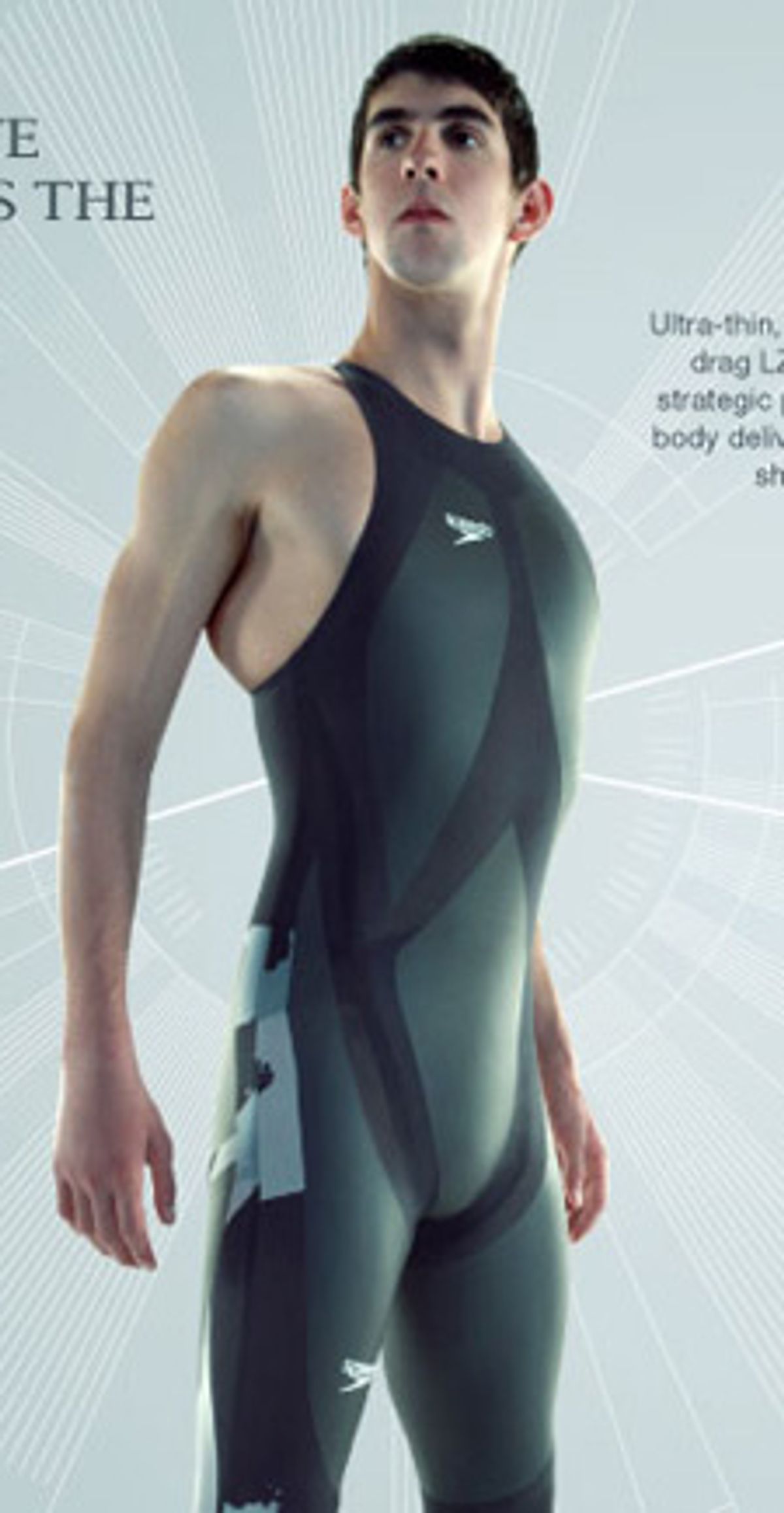Behold swimming superstar Michael Phelps in the Speedo LZR swimsuit: He resembles a merman, all slick and shark-colored, his body fully corseted in what the manufacturer describes as "the world's lightest, most powerful and water repellent swim fabric."
Speedo says the suit reduces the water's drag against swimmers by up to 10 percent, and increases "oxygen efficiency" by 5 percent (compared to previous suits).
The claims seem true: In races all over the world, swimmers wearing the LZR have been smashing speed records.
At the World Championships in Manchester, England, on Wednesday, nine swimmers set record times -- eight of them were wearing the new suit. As the Associated Press reports, "the LZR now has been worn for 21 of the 22 world records set since it was introduced in February."
How does it work? The secret, according to swimmers, is in the groin and abdomen. The LZR is built, there, with an inflexible girdle-like structure meant to hold a swimmer's body in the best position as he or she moves through the water.
Another benefit is seamlessness: The whole suit is "ultrasonically welded" together, a technique that bonds plastic using sound waves. This reduces any lines that may cause drag.
Swimmers say they feel instantly more comfortable in the suit -- it reduces fatigue in their legs, it speeds up turns and starts. American swimmer Ryan Lochte told the London Times that when he slips on the suit "it feels like I'm swimming downhill."
But is this just a feeling? FINA, swimming's governing body, thinks so. It says there's no scientific proof that the Speedo LZR gives swimmers any edge, and it rejected calls from some in the sport to ban the technology.
But given the smashed records, the anti-LZR clamor is growing. Alberto Castagnetti, coach of the Italian national team, says the Speedo suit is a form of "technological doping." SwimNews.com reports that Forbes Carlisle, the legendary Australian swim coach, has written an open letter to swimming officials demanding they reconsider their decision.
Whether the Speedo suit conveys an actual physical advantage or a mere psychological one -- a "placebo effect" -- "swimming is being severely damaged," Carlile wrote.
Carlile also hit on another issue of concern: Money. The Speedo swimsuit is expensive -- $500 for us civilians -- and even more for competitive swimmers, who must wear new suits every 10th swim.
Olympic swimmers' suits are often provided by their national teams, which are in turn often sponsored by manufacturers. Nations sponsored by Speedo, then, are gaining an unfair advantage, some charge.
American swimmers will be wearing Speedo.




Shares